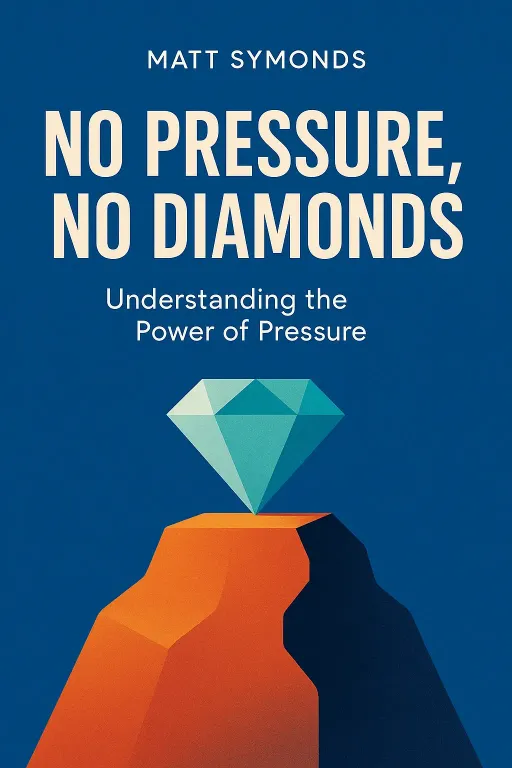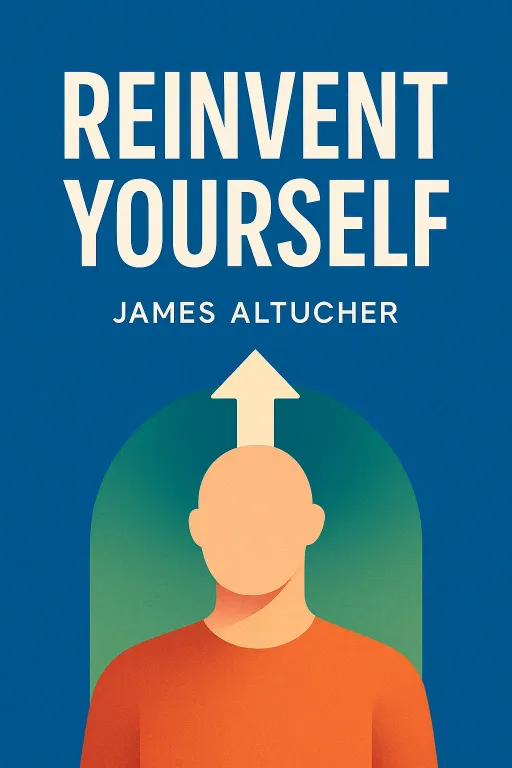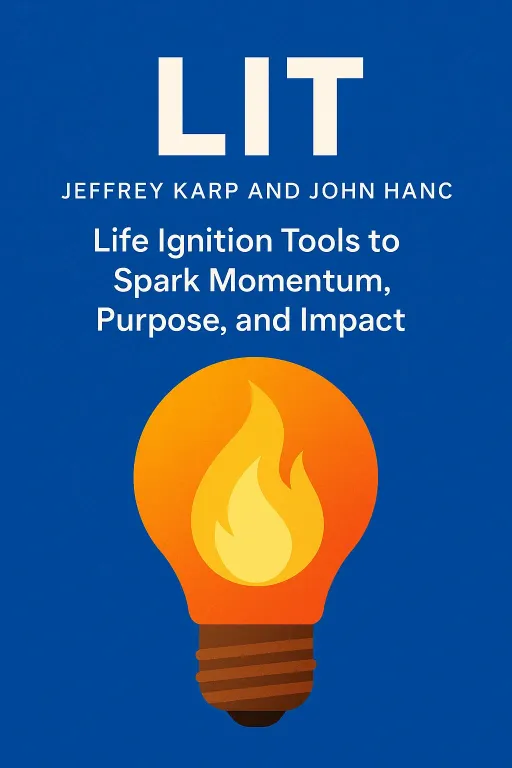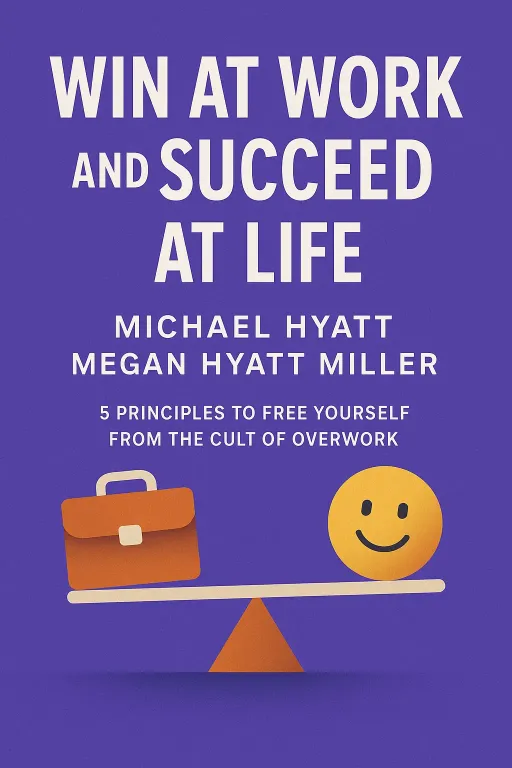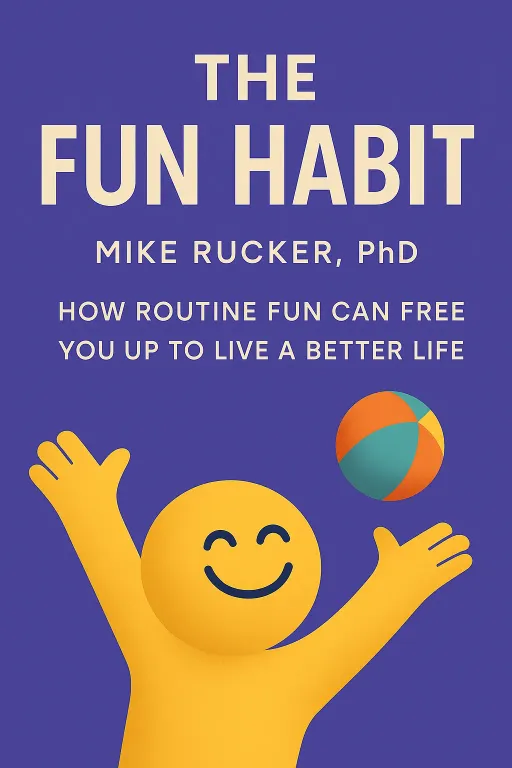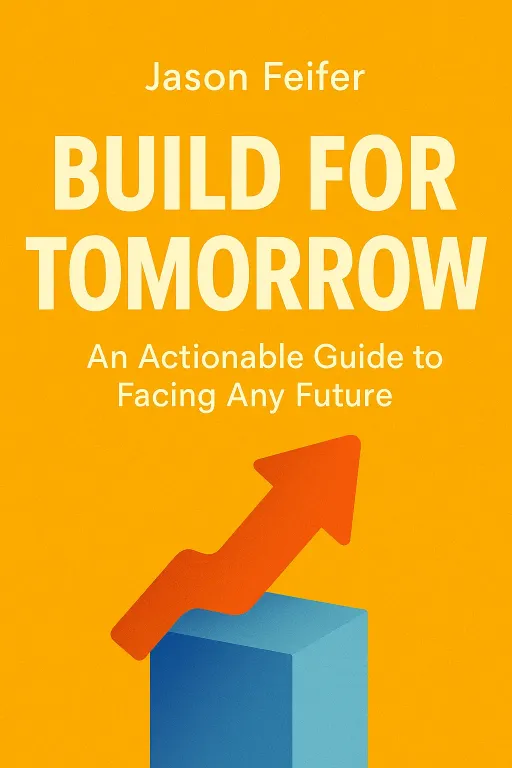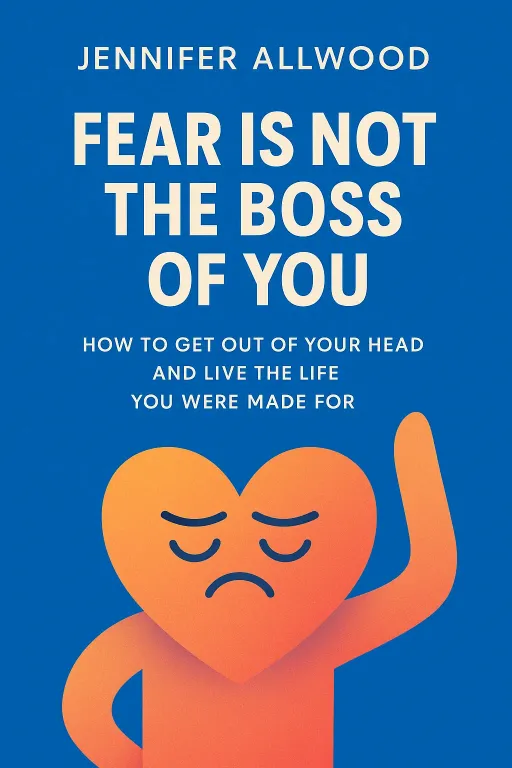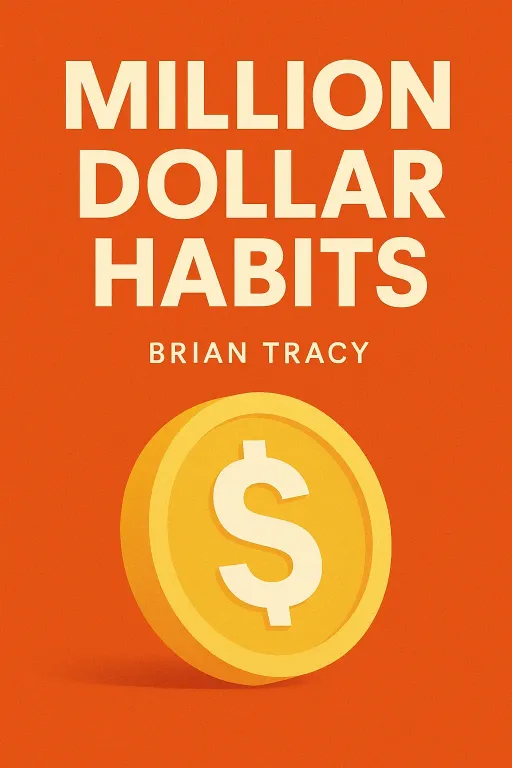
The Entrepreneur's Operating System: Deconstructing the Habits of Million-Dollar Leadership
12 minGolden Hook & Introduction
SECTION
Dr. Roland Steele: What if I told you that 95% of your success as an entrepreneur is already predetermined? Not by the market, not by your investors, but by a hidden 'master program' running in your subconscious right now. It dictates what you believe, how you act, and ultimately, how much you achieve. Today, we’re diving into Brian Tracy’s classic,, to deconstruct that very program.
Dr. Roland Steele: Our guest is education entrepreneur and lifelong learner, kejia li, who lives and breathes the challenge of building something from nothing. Today we'll tackle this from three angles. First, we'll explore that 'Master Program' that runs your subconscious. Then, we'll uncover the paradoxical financial habits of actual self-made millionaires. And finally, we'll focus on the action-oriented habits that define high-impact leadership.
Dr. Roland Steele: Kejia, welcome. As a builder, how much do you think about this internal architecture versus the external product?
kejia li: Roland, it's great to be here. And that question is everything. You can have the most brilliant product idea in the world, but if the founder's internal 'operating system,' as you put it, is buggy—if it's running on fear, self-doubt, or a lack of discipline—the company will eventually crash. The culture, the strategy, the resilience... it all flows from the leader's own programming. So, I'd say it's the most critical piece of the puzzle.
Deep Dive into Core Topic 1: The Master Program: Hacking Your Mental Operating System
SECTION
Dr. Roland Steele: That's the perfect segue. Tracy argues this internal architecture is governed by a set of mental laws. The most powerful, and maybe the most relevant for an entrepreneur, is the Law of Belief. He states it simply: 'Whatever you believe, with conviction, becomes your reality.' It sounds a bit like magic, but he grounds it in a very real story of his own.
kejia li: I'm curious to hear it.
Dr. Roland Steele: Well, Tracy didn't start with any advantages. He left high school without graduating, worked a series of manual labor jobs—construction, washing dishes, working on a freighter. He was drifting, and at one point, he was so broke he was sleeping in his car. He felt like a total failure.
kejia li: A situation many founders can empathize with, even if not that literally. The feeling of being on the brink.
Dr. Roland Steele: Exactly. So he gets into commission sales, but he's still barely scraping by. One day, out of desperation, he goes to the top salesman in his company—a guy who was earning ten times what he was—and he just asks him, 'What are you doing that I'm not?' The salesman tells him his secret: he asks for the sale at the end of every conversation. Tracy is stunned, but he decides to try it. He starts asking. And his sales start climbing. This small success gives him a jolt of confidence. He then develops a new habit: whenever he sees someone doing something better, he goes and asks them how they do it.
kejia li: He's creating his own feedback loop.
Dr. Roland Steele: Precisely. He starts reading books, listening to programs, and applying what he learns. Over time, his income skyrockets. He becomes the top salesman, then a manager. The key insight for him was that success wasn't an accident. It was cause and effect. He had to change his core belief from 'I'm a failure' to 'I can learn anything I need to learn to achieve any goal I set for myself.' He reprogrammed his own master program.
kejia li: That's the 'reality distortion field' in action, but for himself. You know, we talk about Steve Jobs having this ability to convince others of a reality that didn't exist yet. But the first person a founder has to convince is themselves. You have to believe in a future that no one else can see, and with absolute conviction. Tracy essentially reverse-engineered that process.
Dr. Roland Steele: How so?
kejia li: It wasn't just wishful thinking. It was a deliberate, systematic process. He identified a limiting belief—'I'm not good at sales'—and replaced it with an empowering one through a specific action: asking for the sale. The resulting success validated the new belief. It's an iterative loop, just like product development. You ship a feature, get user feedback, and improve. He shipped a new behavior, got market feedback in the form of a 'yes,' and it upgraded his entire mental model.
Dr. Roland Steele: And he didn't guess. He sought out a mentor.
kejia li: That's the other critical piece. He didn't try to reinvent the wheel. He found someone who had already solved the problem and asked for the source code. For entrepreneurs, that's the value of advisors, of a good board, of just being humble enough to say, 'I don't know, but you do. Please show me.'
Deep Dive into Core Topic 2: The Millionaire's Paradox: Frugality, Not Flash
SECTION
Dr. Roland Steele: Exactly, it's a deliberate process. And that process extends to something that feels very counter-intuitive for people chasing success: money. Tracy's research on self-made millionaires, detailed in Chapter 5, reveals a fascinating paradox. The public image of a millionaire is flashy cars and big spending. But the reality? It’s the habit of radical frugality.
kejia li: The opposite of 'fake it till you make it.'
Dr. Roland Steele: Completely. He says most self-made millionaires are incredibly careful with their money. They prioritize saving and investing over conspicuous consumption. One of the most powerful habits he describes is the 'Wedge Theory.' The idea is, instead of trying to cut back on your current lifestyle, you make a decision today to save and invest 50% of every single pay raise or income increase you get for the rest of your life.
kejia li: So you're driving a wedge between your rising income and your expenses, and capturing the difference. That's a brilliant system.
Dr. Roland Steele: It is. It allows your lifestyle to improve, but your savings rate accelerates dramatically. This discipline is perfectly illustrated by a story Tracy tells about Warren Buffett. During the dot-com boom of the late 90s, everyone was piling into tech stocks. Buffett was publicly criticized, even mocked, for sitting on the sidelines. His company, Berkshire Hathaway, was underperforming the market.
kejia li: The pressure to jump on that bandwagon must have been immense.
Dr. Roland Steele: Unbelievable. But when asked why he wasn't investing, his answer was simple: 'I don't understand these businesses.' He had a rule: 'Investigate before you invest.' He couldn't model their future earnings, so he did nothing. He stuck to his principles. And of course, when the bubble burst in 2000 and 2001, and trillions in market value evaporated, his discipline was vindicated. He looked like a genius, but it wasn't genius. It was habit.
kejia li: That is capital efficiency 101. In the startup world, your biggest enemy is your burn rate. This 'frugality' habit isn't about being cheap; it's about discipline and the strategic allocation of your most precious resource—cash. Every dollar you spend on vanity metrics or a flashy office is a dollar you can invest in product development or top talent—the things that actually create long-term value.
Dr. Roland Steele: So you see a direct parallel to running a business.
kejia li: Absolutely. Buffett's story is the ultimate lesson in avoiding FOMO—the Fear Of Missing Out. Founders are constantly bombarded with the 'next big thing,' whether it's a marketing trend, a new technology, or what a competitor is doing. The discipline to say, 'That's not our game, we don't understand it, so we're not playing,' is incredibly difficult, but it's what separates enduring companies from the ones that flame out chasing hype.
Deep Dive into Core Topic 3: The Action Bias: Habits of High-Impact Leadership
SECTION
Dr. Roland Steele: Strategic allocation... that's the perfect bridge to our final point. You can have the right mindset and the right financial plan, but as you know better than anyone, without execution, it's all just theory. Tracy says the top performers, the future leaders, have a powerful habit he calls 'action-orientation.' They have a bias for action.
kejia li: They get things done.
Dr. Roland Steele: And they seek out opportunities to do so. He tells another story from his own career, this time from Chapter 6. He started a new job at a large company, but his role was small and he was bored. So, he went to his boss, the Chairman, and said, 'Is there anything else I can do? I have some extra time.'
kejia li: A bold move.
Dr. Roland Steele: The boss was surprised but gave him a small extra task. Tracy stayed late, worked through the weekend, and had it on his boss's desk Monday morning, done perfectly. He kept doing this. He'd finish his work, then ask, 'What else?' Soon, he started proactively taking things off his boss's plate. Within one year, he went from a junior employee to managing three divisions of the company. His income tripled. The habit was simple: ask for more responsibility and get it done fast.
kejia li: That's the person you build a company around. When you're hiring, especially in the early stages, you're looking for that exact trait. Not just talent, but initiative. In a startup, there is no perfectly defined job description. There's just a mission and a mountain of problems. You need people who, like Tracy in that story, see a problem and run towards it, not away from it.
Dr. Roland Steele: And as a leader, how do you encourage that?
kejia li: You have to create a culture of ownership. You reward initiative, even if it leads to a mistake. You make it clear that the worst thing an employee can do is wait to be told what to do. The leaders I admire—the Jobs, the Bezos—they built organizations that were engines of action. Amazon's 'disagree and commit' principle is a great example. It's designed to prevent analysis paralysis and force a decision so the team can move forward. It's about valuing momentum over perfect consensus. That's the action bias at an organizational level.
Synthesis & Takeaways
SECTION
Dr. Roland Steele: So there we have it. A three-layered system for success. It starts with the internal—reprogramming your mental operating system. Then it moves to the practical—mastering the financial discipline of frugality and saving. And it all culminates in the external—a relentless bias for action and execution.
kejia li: It's an inside-out job. And what I love about Tracy's work is the final point he makes. He quotes, "The most important part of becoming a millionaire is not the money. It's the person that you have to become to accumulate a million dollars in the first place." It's about building character.
Dr. Roland Steele: A powerful final thought. If you were to leave our listeners with one actionable step from this book, what would it be?
kejia li: I think it comes from Chapter 4 on excellence. Tracy says your weakest key skill determines the height of your success. So the question for everyone listening, especially for fellow entrepreneurs, isn't just 'what do I need to do?', but 'who do I need to become?'. And a great, tangible starting point is to ask yourself right now: what is my single weakest key skill—is it sales, is it public speaking, is it financial modeling?—and what is my concrete plan to start mastering it, starting today? That's a habit that will pay dividends for a lifetime.
Dr. Roland Steele: A perfect challenge to end on. Kejia li, thank you so much for sharing your insights.
kejia li: My pleasure, Roland. This was fantastic.
